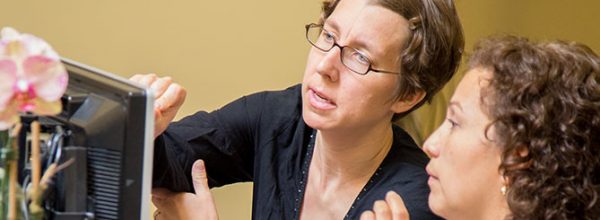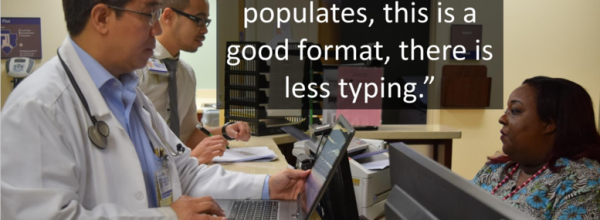Should patients come into the clinic for every question or adjustment in their treatment? By integrating virtual telephone visits into the care process, Riverside County Heath System is seeking to lower costs, increase patient access, reduce hospital readmission rates, and improve patient satisfaction.
Seeing the Problem
For populations served by safety net providers, clinic visits can mean difficulties finding transportation and costly sacrifices of time off from work. For providers, trying to see every patient that needs care in a given day is at best overwhelming and at worst impossible—especially in the safety net. By searching for less disruptive ways to tackle certain kinds of routine care and communication, we can ease the workload on providers and reduce inconvenience for patients.
The Patient Perspective
- Particularly in underserved communities, the expenses of transportation, arranging childcare, and taking time off work all make trips to the doctor costly and inconvenient.
- Patients who are unable to access primary care in a timely manner are more likely to visit the emergency room and experience poor outcomes.
- Patients need to have an ongoing conversation with their provider about care, treatment and prevention, but the inconveniences of face-to-face visits make this a struggle for both parties.
Best Uses, Biggest Impacts
Virtual telephone visits can be appropriate for addressing a wide variety of clinical issues and follow-up care, including discussion of abnormal test results, medication management, care coordination or referrals, management of chronic conditions, management of acute conditions (cough/cold symptoms, simple urinary tract infection, etc.), post-hospital or post-emergency follow-up, preventive care, health education, outreach, and supportive counseling. Providers should only conduct telephone visits with established patients, or new patients who are on a long waiting list for an appointment.
How It Works
- Clinicians often make telephone calls to their patients at the beginning or end of the clinic day or squeezed in between scheduled in-person clinic visits. This innovation proposes to incorporate virtual telephone visits into the regular clinic schedule, thereby creating a greater incentive to utilize telephone visits when appropriate.
- Telephone visits should be scheduled in appointment slots that are designated specifically for virtual telephone visits. When scheduling a telephone visit, staff should request and verify the best phone number to reach the patient, as well as a secondary telephone number.
- Staff should provide each patient with an estimated window of time to expect a call from their provider. If the provider is running late, staff should call to inform the patient of the anticipated delay.
- Virtual telephone visits require the same level of pre-visit preparation as in-person clinic visits: charts should be prepared and reviewed; patients should receive reminder calls the day before.
- Upon calling the patient, the provider should first verify the identity of the patient and clearly state that they are calling for a telephone visit
- At the end of the call, review the main points of discussion, explain the next steps of the patient’s care plan and ask if the patient has any questions.
- Document the telephone visit in the patient’s medical chart during or immediately after the call, plus the date and time of service, name of provider, assessment, and next steps. Then complete an encounter form and mark the appropriate CPT code based on the length of the call.
- Prescriptions, laboratory or diagnostic test orders, referrals, and follow-up appointments should be completed (and tasked to relevant clinic staff) immediately following the virtual telephone visit.
Lessons from Practice
- From their early trials, Riverside County Health System found that while each virtual telephone visit will vary in length depending upon the nature of the discussion, a good overall goal is to complete approximately six virtual telephone visits per hour.
- Providers should try to contact patients 3 times before trying to schedule an in-person appointment.
- During scheduling and reminder calls, staff should be clear and explicit that the appointment is for a “telephone visit” and not an “in-person clinic visit.”
What’s Next?
At Riverside, the Innovation Team that developed virtual telephone visits is spreading the program to additional clinics and fostering culture changes by training family medicine residents using a new requirement incorporating non-face-to-face visits into curriculum and training. The success of telephone visits program will be measured by the total number of patient encounters, reduction in appointment backlog, patient satisfaction, and clinician and staff engagement. Longer-term measures of success could examine the impact of virtual telephone visits on clinical quality indicators, such as diabetes measures. The greatest challenge is developing a financially sustainable model for virtual telephone visits.
Learn More
- The Riverside County Health System is composed of 10 FQHC look-alike county clinics and Riverside County Regional Medical Center. The demand for primary care appointments greatly exceeds the supply; the unmet demand for appointments is about 425 per day. Visit their website: rcrmc.org
- The Safety Net Innovation Challenge provides seed funding and design coaching for innovative ideas that test new solutions to common problems. The Challenge is supported by funding from Blue Shield of California Foundation: blueshieldcafoundation.org







